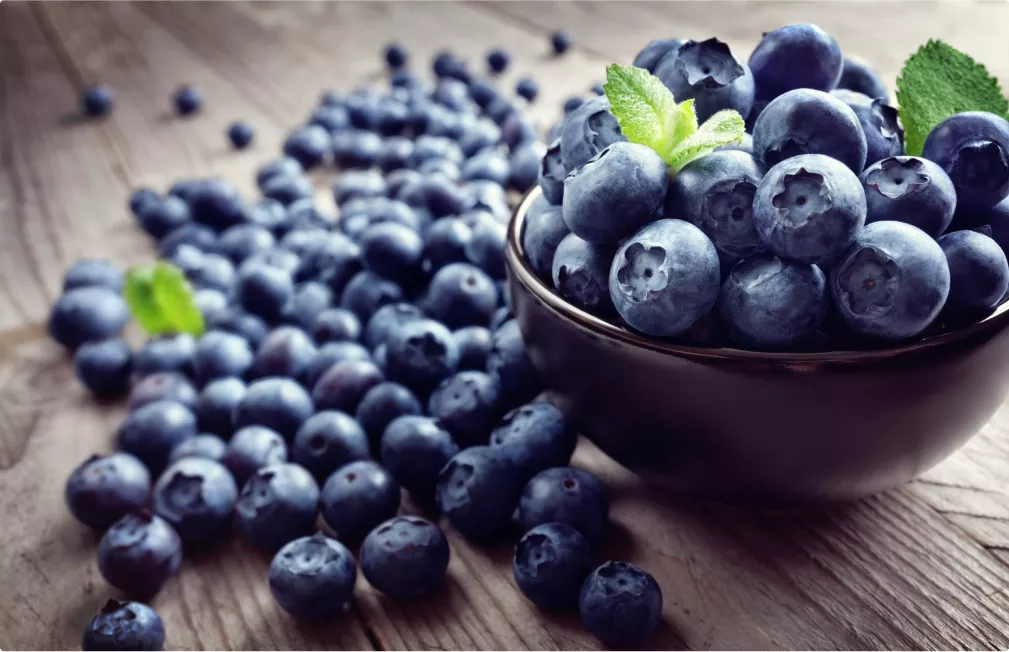They contain a high content of antioxidants, which help protect our cells against damage caused by free radicals.
Cranberries/blueberries are dark blue, purple or reddish berries, which grow on dwarf bushes of the genus Vaccinium macrocarpon. They are from the same family as blackberries and raspberries. These small round fruits can be consumed fresh, in juice or in jams.
They are very popular all over the world, thanks to their slightly acidic taste and multiple beneficial properties for health, making them an excellent option to add to any balanced diet.
Numerous studies outline the multiple benefits and properties of cranberries/blueberries. This has led them to be dubbed “the fruit of the 21st century”.
We can find cranberries/blueberries in supermarkets or fruit shops, both fresh and frozen.
Cranberries are native to North America, although today they are grown in many areas of the Northern Hemisphere. The Native Americans used them as a key ingredient in a survival food called pemmican. They also used them for centuries as natural medicine.
Cranberries contain vitamin C, which is a powerful antioxidant that helps strengthen the immune system, contributing to skin health.
This fruit also provides vitamin E, another antioxidant that helps protect the body's cells from oxidative damage.
They are also a good source of vitamin K, which plays an important role in blood clotting and bone health.
They also provide vitamin B6, which plays a key role in the metabolism of proteins and red blood cells.
Although in smaller quantities, they also provide vitamin A, essential for eye health and the proper functioning of the immune system.
Minerals
Cranberries are an important source of potassium, essential for proper muscle function, nerve function and fluid balance in the body.
They also contain manganese, which plays an essential role in nutrient metabolism, bone formation and nervous system function.
This fruit also provides small amounts of copper, a mineral essential for red blood cell formation, immune system functioning and energy production.
Although to a lesser extent, cranberries/blueberries provide iron, which is necessary for the production of haemoglobin and the transport of oxygen in the body.
They also contain small amounts of calcium, which is essential for the health of bones and teeth and for the proper functioning of the muscular and nervous system.
Cranberries/blueberries are a low-calorie fruit. On average, one cup of cranberries/blueberries (about 148 grams) contains about 84 calories. This makes them an option that is healthy and suitable for a balanced diet.
They contain natural sugars, but their sugar content is relatively low compared to other fruits. On average, one cup of cranberries/blueberries contains about 15 grams of sugar. In addition, they are also high in fibre, which can help regulate the absorption of sugar in the body.
The antioxidants contained in cranberries and blueberries are able to improve cognitive function and reduce the risk of neurodegenerative diseases such as Alzheimer’s.
Cranberry juice produces an important antiseptic and antibiotic effect on urinary-infection-causing bacteria, especially on Escherichia coli.
Antioxidants in cranberries and blueberries also help prevent age-related eye problems, such as macular degeneration and cataracts.
Although cranberries and blueberries are generally safe and beneficial for health, there are some contraindications and precautions to consider.
For instance, people with kidney problems should consume them sparingly, as they may contribute to the formation of kidney stones.
As with any food, some people may be allergic to this fruit. If you experience symptoms such as itching, swelling, rashes, or difficulty breathing after consuming cranberries, it is important to seek medical attention right away.
It is always advisable to consult a health care professional or a nutritionist before making any significant changes to your diet, especially if you have a medical condition or are taking medication of any kind.
Cranberry juice is a refreshing and nutritious drink that offers several health benefits, in particular its antioxidant power.
Blueberry smoothies, blueberry muffins and blueberry parfait are just a few ideas to encourage you to try this delicious fruit.




